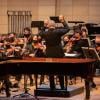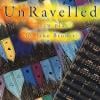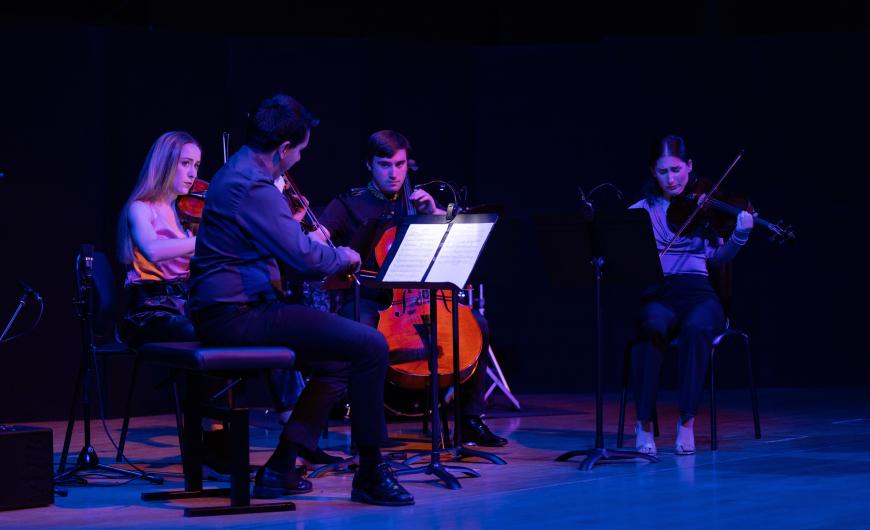
“The intersection of art and science is the space in which we discover ourselves.” That space and that theme were established at the outset of Tuesday evening at the San Francisco Conservatory of Music in remarks by the school’s president, David Stull.
It was the fifth in a series of fascinating collaborations between SFCM and the University of California, San Francisco, which was represented at the event by a team of four neurologists. Presentations by the scientists were interspersed with talks by SFCM faculty and short performances by SFCM students of music evocative of the evening’s theme: “Sleep and Dreams.” The program was emceed by Emily Silverman, a UCSF professor and the creator of The Nocturnists, a podcast with the stated mission of humanizing the practice of medicine by sharing the stories of healthcare workers.
Reactions of the nearly full audience in Hume Concert Hall, including a good number of SFCM and UCSF students, evoked the spirit of a science fair mixed with a talent show, at times puzzling but ultimately entertaining and informative. Following a quartet’s sweet rendition of Claude Debussy’s Rêverie, UCSF’s Liza Ashbrook, with the help of projections, explained the stages of sleep and the importance of nocturnal “cleaning of the brain.” She spoke also of disorders which can manifest at night, as when REM (rapid eye movement) sleep can “intrude” on the waking state.
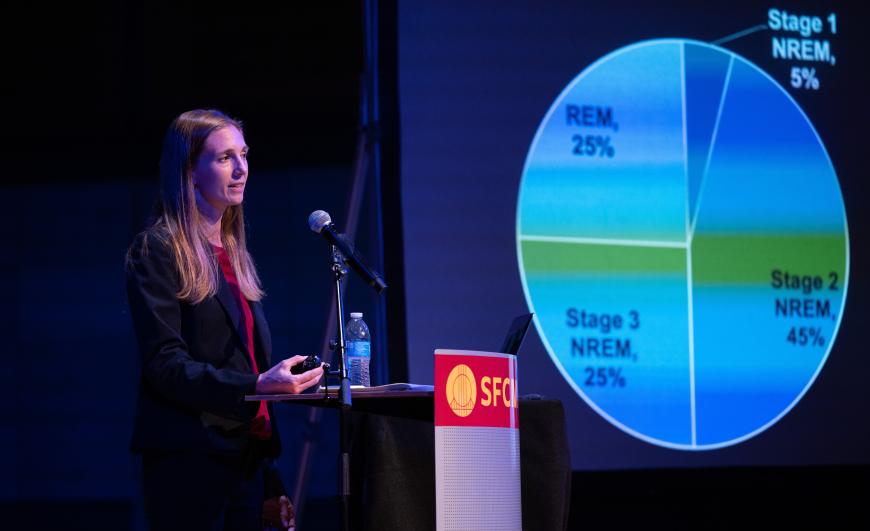
Kamalini Ranasinghe, from the UCSF Memory and Aging Center, was one of several colleagues to discuss the link between sleep disorders and Alzheimer’s disease. She compared the healthy alignment of brain waves to the importance of conducting and tuning in musical performance.
The program included the premiere of Natasha Frank and Lina Harrison’s The Spinning Wheel, performed on piano and cello, with electronic effects — all done in collaboration with Taurin Barrera of SFCM’s Technology and Applied Composition studio and UCSF’s Christine Walsh, who provided measurements of sleep data that were converted into a musical score. Notes in the program booklet described the piece’s two sections as reflecting both the “meditative and peaceful” stages of sleep and the bursts of neural oscillatory activity called “spindles,” which “are musically portrayed using harmonic glissandi, played out ponticello.” The novelty was intriguing but eluded tangible development and structure.
Nikolaus Hohmann, who chairs SFCM’s Humanities and Sciences Department and teaches both history and philosophy, took a jocular approach to the topic of dreams and art, making use of projections of Henry Fuseli’s The Nightmare and the surrealism of Salvador Dalí, as well as musical references extending from Giuseppe Tartini to Jimi Hendrix. The evening also included personal accounts of dreams by emcee Silverman and by transgender medical student Oak Sonfist.
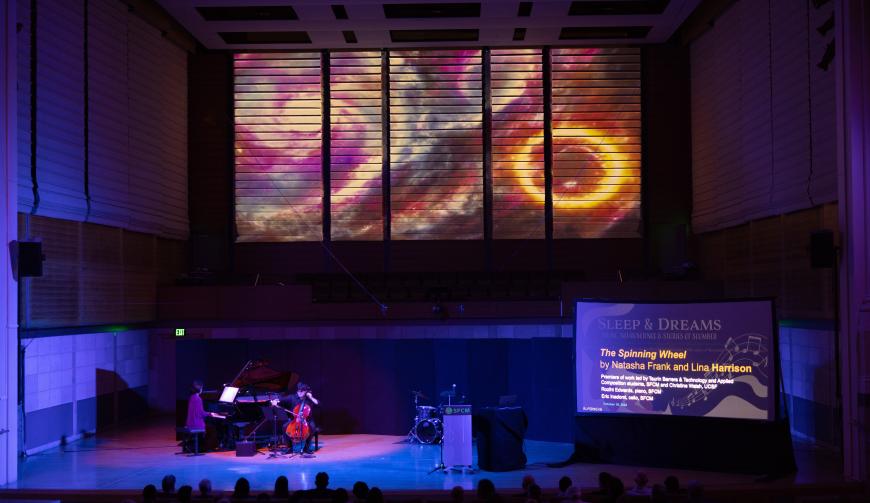
The value in this collaborative effort having “blurred the lines between art and science,” as Stull put it in his closing remarks, is undeniable and vital. During a reception following the program, UCSF’s Victor Valcour, who also heads up the Global Brain Health Institute, highlighted GBHI’s Atlantic Fellows program, which “is international and interdisciplinary. This year, we have a visual artist, an actor, and a violinist, as well as a neurologist, neuroscientists, geriatricians, and public-health individuals. We’re trying to move the world forward on brain health equity.”
The paintings of Colombian native Luis Martinez, a neurologist and Atlantic Fellow, were on display in the SFCM lobby and were projected during the program. Jake Broder, a playwright and another Atlantic Fellow, has been studying neurodegenerative disorders at UCSF and promoting his play dealing with Maurice Ravel, who was also the focus of the initial UCSF-SFCM collaboration. Broder’s UnRavelled connects the French composer with Canadian biologist Anne Adams, who took up painting, chose Bolero as a subject, and shared the disease (primary progressive aphasia) that propelled her and Ravel toward dementia. UnRavelled, produced on Zoom during the pandemic, will screen at UCSF’s Mission Bay campus on Nov. 15, with Broder, actress Lucy Davenport, and Emily Silverman present for a discussion. To attend, register here.
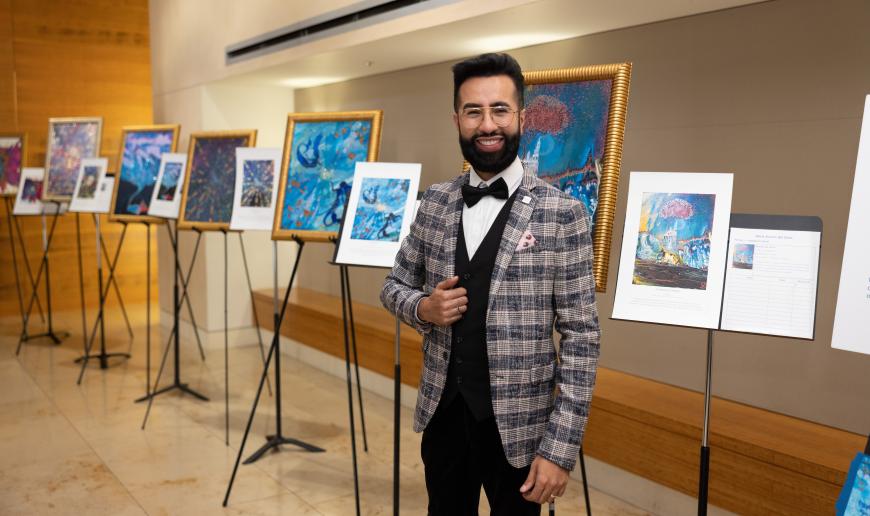
Katie Nicely, vice president for advancement at SFCM and the co-creator of the UCSF linkup, reflected on the mutual benefits of the event series, which has also explored dyslexia (with a nod to Beethoven) and equity in the arts. “One of the foundations we like to teach our students is the importance of the brain and its effect on music, and we’ve introduced that into our curriculum in a way that none of our peer institutions have,” she noted. Referring to student guitarist Matt Wherley’s performance of a Benjamin Britten piece in the evening’s “Unconscious Illuminations” section, Nicely proposes Wherley might have picked up “a deeper, richer interpretation from the things he learned” from the scientists at a rehearsal on the previous Friday. UCSF faculty have also shared drop-in brown bag sessions with SFCM students.
As for the scientists’ takeaways, “they get published in journals,” Nicely pointed out, “but when they can get up and present their work in a way that’s accessible to all, it’s similar to a musical performer when they’re alone and practicing and wanting it to be perfect and then realizing it needs to be accessible when they reach an audience.”
“We’re getting a public audience in a way that our faculty is not used to,” Valcour agreed, “and we’re keen on really making our community the best place in the world.” Plans are underway to continue the series into the new year.


